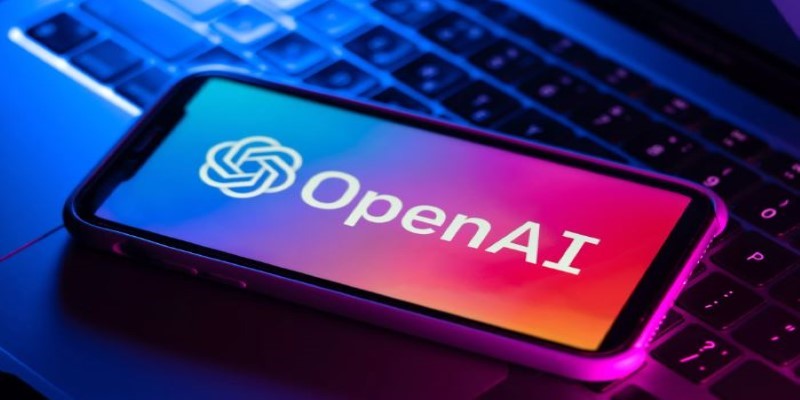Advertisement
Generative artificial intelligence has transformed how professionals approach their daily tasks. It saves time and effort and simplifies things, especially in data-oriented professions. Every day, analysts handle a lot of data. They compile data, draft reports, and design presentations. Doing this manually can take hours. AI tools change the process completely. These tools can handle repetitive tasks and might also help with summaries and insights.
It allows analysts to focus more on critical thinking and problem-solving. Here are four straightforward methods by which generative artificial intelligence can help analysts. These approaches apply in many sectors and raise workflow and accuracy. No complicated arrangement is required. One can go far with only a basic knowledge of artificial intelligence tools.

Here are four practical ways generative AI helps analysts work faster, reduce errors, and improve daily productivity:
Long data reports are sometimes required of analysts to summarize. These reports might come from performance dashboards, platforms, or surveys. Reading everything manually takes hours. AI systems can rapidly provide succinct, unambiguous summaries. Generative artificial intelligence can point out important data trends. It looks for patterns, spikes, and metric declines. Building presentations or dashboards saves time. One prompt might summarize things. You don't have to read every line of unprocessed data. Furthermore, text-based artificial intelligence technologies such as chatbots can handle structured data. You upload the data and give basic instructions, such as 'Summarize this sales report by region and month.' The tool answers in seconds with pertinent data. These summaries provide customer or manager reporting. The language is simple, and understanding ideas is easy as well. It lessens mistakes from hand interpretation as well. Results, then, are more professional and dependable.
Writing reports calls for both time and imagination. Usually, one spends most of their time creating material, polishing language, and verifying structure. Generative artificial intelligence can speed up and smoothen up this process. Just type a brief prompt describing what the report should include. The AI technology can do first-draft writing. It calls for headings, lists, and summaries. It can also change the tone based on the viewers. Executive reports could call for formal language. Internal teams may prefer a more laid-back tone in their reports. The tool offers great flexibility in writing style. You simplify the editing process once you've completed most of the work. AI tools can assist in building speaker notes and bullet points for presentations. Certain tools can even offer slide designs. It lessens the time needed to format slides. Using artificial intelligence at this stage maintains the work orderly and clean. Having a first draft ready helps you avoid writer’s block.
Making sense of raw data can be challenging. Usually, it calls for numerous rounds of review and considerable thought. AI tools speed up this process by identifying trends and patterns. Feeding data into a generative artificial intelligence model helps one to grasp trends. "What are the top reasons for revenue decline last quarter?" for instance. The tool analyzes the numbers and provides the answer. Artificial intelligence can propose plausible reasons rather than only characterizing data. It can also contrast areas, consumer groups, or periods. It helps clarify complex information. Certain tools let one directly connect to databases or spreadsheets. It speeds up the creation of brief overviews even more. Results show practically immediately with directed cues. Then, analysts can confirm the AI's conclusions. This double-checked method enhances the result at last. It also saves hours that would be lost personally searching for trends.

Analytical work revolves much on forecasting. It guides groups in future planning. Advanced techniques and traditional forecasting demand time. Generative AI streamlines this procedure. Using prior data, artificial intelligence can project future outcomes. It does this by recognizing recurring trends over time. It can, for instance, project consumer growth, demand, or sales. Simple directions like "Predict next month's website traffic" might produce helpful forecasts. Though they are not flawless, these forecasts might help one make decisions. They support goal setting and planning preparation. Generative AI can also assess different planning scenarios. "What happens if sales rise by 10% next quarter?" for example. It can produce expectedly successful models and strategic planning benefits from this. AI allows teams to replicate risk as well. It can highlight potential mishaps and offer recommendations for reaction.
The job definition of an analyst is now evolving with generative artificial intelligence. Once done manually, tasks are either partially or mechanized now. This change lets analysts pay more attention to communication, strategy, and decision-making. Professionals today interpret data with AI help, not merely gather and clean it. This change requires fresh abilities. Learning how to trigger, analyze, and confirm artificial intelligence outputs is essential. These days, the function combines human judgment with technological efficiency.
Companies also want more real-time analytics and agility. Generative artificial intelligence accelerates analysis, so enabling this. It lets reactions to consumer comments or market developments be faster. AI manages repetitious tasks; analysts offer context and critical thought. This collaboration improves both value and quality. Success will rely on those who can effectively integrate artificial intelligence tools.
Generative artificial intelligence is changing analysts' approach. It increases efficiency and helps to cut time spent on tedious tasks. From data summarizing to report preparation and future forecasting, artificial intelligence provides useful assistance. These days, analysts should concentrate more on insight, strategy, judgment, and decision-making. Professionals with just rudimentary AI knowledge can increase production and accuracy. Using AI tools becomes imperative as companies search for faster and smarter analysis. The analyst's job now is more about the prudent use of technology than only figures. Thriving in this AI-driven future will depend mostly on being open to learning and adjusting. It is the change that offers actual possibility.
Advertisement

Discover practical methods to sort a string in Python. Learn how to apply built-in tools, custom logic, and advanced sorting techniques for effective string manipulation in Python

Compare Notion AI vs ChatGPT to find out which generative AI tool fits your workflow better. Learn how each performs in writing, brainstorming, and automation

A top Korean telecom investment in Anthropic AI marks a major move toward ethical, global, and innovative AI development

Oracle adds generative AI to Fusion CX, enhancing customer experience with smarter and personalized business interactions

What DAX in Power BI is, why it matters, and how to use it effectively. Discover its benefits and the steps to apply Power BI DAX functions for better data analysis

How to write effective ChatGPT prompts that produce accurate, useful, and smarter AI responses. This guide covers five clear ways to improve your results with practical examples and strategies

Discover 8 legitimate ways to make money using ChatGPT, from freelance writing to email marketing campaigns. Learn how to leverage AI to boost your income with these practical side gigs

Explore the journey from GPT-1 to GPT-4. Learn how OpenAI’s lan-guage models evolved, what sets each version apart, and how these changes shaped today’s AI tools

Is it necessary to be polite to AI like ChatGPT, Siri, or Alexa? Explore how language habits with voice assistants can influence our communication style, especially with kids and frequent AI users

Argilla 2.4 transforms how datasets are built for fine-tuning and evaluation by offering a no-code interface fully integrated with the Hugging Face Hub

Discover how ChatGPT can enhance your workday productivity with practical uses like summarizing emails, writing reports, brainstorming, and automating daily tasks

Selecting the appropriate use case will help unlock AI potential. With smart generative AI tools, you can save money and time